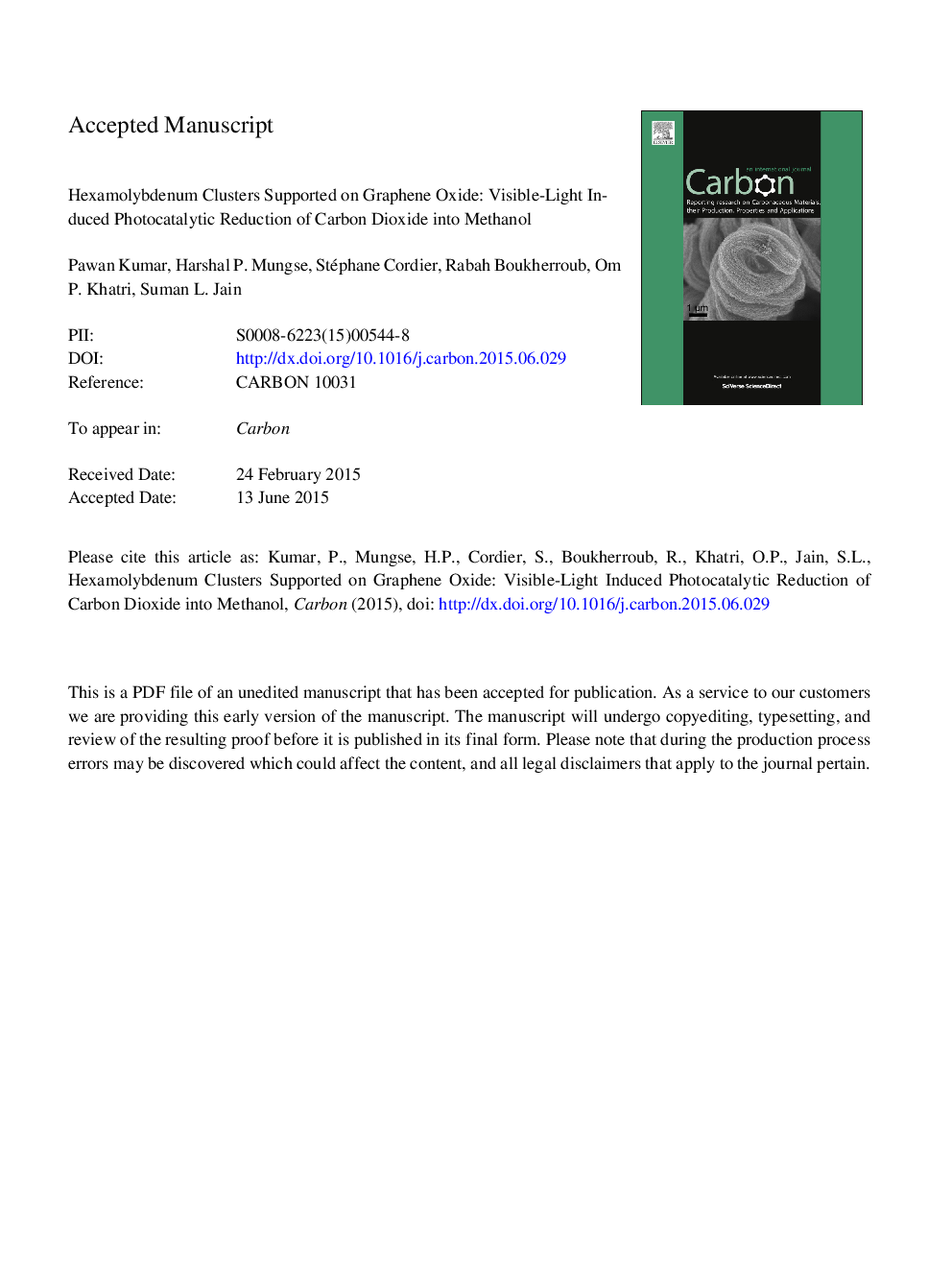| Article ID | Journal | Published Year | Pages | File Type |
|---|---|---|---|---|
| 7851183 | Carbon | 2015 | 25 Pages |
Abstract
Hexamolybdenum (Mo6) cluster-based compounds namely Cs2Mo6Bri8Bra6 and (TBA)2Mo6Bri8Bra6 (TBA = tetrabutylammonium) were immobilized on graphene oxide (GO) nanosheets by taking advantage of the high lability of the apical bromide ions with oxygen-functionalities of GO nanosheets. The loading of Mo6 clusters on GO nanosheets was probed by Fourier-transform infrared (FTIR) spectroscopy, X-ray photoelectron spectroscopy (XPS), high resolution transmission electron microscopy (HRTEM) and elemental mapping analyses. The developed GO-Cs2Mo6Bri8Brax and GO-(TBA)2Mo6Bri8Brax composites were then used as heterogeneous photocatalysts for the reduction of CO2 under visible light irradiation. After 24 h visible light illumination, the yield of methanol was found to be 1644 and 1294 μmol gâ1 cat for GO-Cs2Mo6Bri8Brax and GO-(TBA)2Mo6Bri8Brax, respectively. The quantum yields of methanol by using GO-Cs2Mo6Bri8Brax and GO-(TBA)2Mo6Bri8Brax as catalysts with reference to Mo6 cluster units presented in 0.1 g amount of catalyst were found to be 0.015 and 0.011, respectively. The role of immobilized Mo6 clusters-based compounds on GO nanosheets is discussed to understand the photocatalytic mechanism of CO2 reduction into methanol.
Related Topics
Physical Sciences and Engineering
Energy
Energy (General)
Authors
Pawan Kumar, Harshal P. Mungse, Stéphane Cordier, Rabah Boukherroub, Om P. Khatri, Suman L. Jain,
